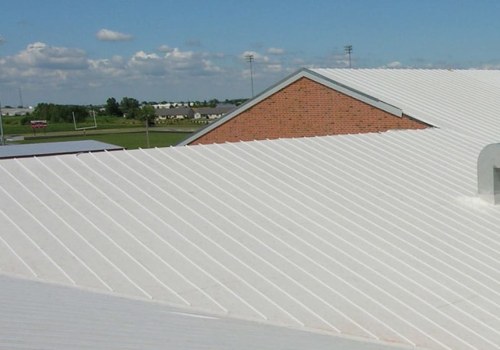These improvements include roof repairs, waterproofing and even full roofing projects on existing buildings. Under Section 179, you may enjoy providing the reduced cost of repairing the old roof even after you purchase the new one. To achieve this, you must first capitalize on your ceiling, and then depreciate the expenses that increase the value of the ceiling. Yes, if you meet the other limitations of Section 179 for total income and assets put into service during the year.
The new roof will be capitalized according to its depreciation schedule and accounted for under Section 179 when removing the old roof. For people looking to improve their roof system, it's important to understand the IRS Section 179 deduction, which can help businesses save tons of money on taxes. Company A must capitalize on these costs as an upgrade; however, the new roof is eligible for 179 expenses and Company A can dispose of the old roof. For any given fiscal year, a business remains eligible for Section 179 if the specific equipment, the roof in this case, is purchased or leased between January 1 and December 31 of the same year.
Section 179 of the IRS Tax Code encourages qualified expenses that are investments, such as maintenance and upgrades to roofs and HVAC. Section 179 (f) of the Internal Revenue Code () identifies the costs of roofing, fire protection, alarm systems, security systems and HVAC property as eligible for Section 179 expenses if the new improvement is put into service after the date the non-residential real estate was placed in service. NRCA is pleased that the Tax Cuts and Jobs Act expands the definition of qualifying real estate eligible for total spending under Section 179 of the Tax Code to include improvements to non-residential roofs. Essentially, any non-residential roof enhancements, including total roof renovation of existing buildings, can now be spent in the year of purchase by any taxpayer eligible to deduct Section 179 expenses.
Expenses qualified as investments are sanctioned under Section 179 of the IRS Tax Code, including maintenance and remodeling of roofs and HVAC. Contact your tax professional for information on how you can take advantage of the 179 tax deduction for roofing projects. Last year's Tax Cuts and Jobs Act included a change to the Section 179 deduction that is important to highlight for roofing projects. Businesses can now deduct the full cost of a roof replacement in the year it is completed rather than depreciated for 39 years using the Section 179 tax deduction.
Now that Section 179 is available for roofing, fire protection, alarm systems, security systems, and HVAC systems, taxpayers can get the best of both worlds. With the recent update of 179 tax deductions, the best time for commercial building owners to do the necessary roof maintenance and repair work is now, when it is most lucrative.



